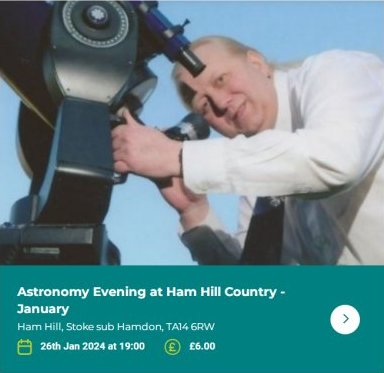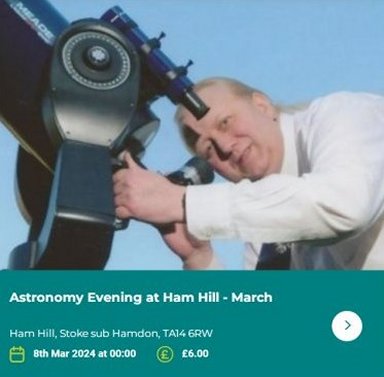|
Monday 25th to
Sunday 31st December 2023 |
| |
|
Firstly, some very exciting news for
Christmas morning. I have seen Father Christmas' flight schedule for
Christmas Day and if you are up around 7am to open those presents, it should
be possible to see his sleigh passing overhead. |
| |
|
Look towards the west at 7.25am and you will
see the sleigh appear as a pinpoint of light, like a star that is moving.
Because he is travelling so fast, it will only take about six minutes for
him to pass almost directly overhead, before disappearing to the east on his
way home. It won't be possible to see the individual reindeer though, as
they are too small to show up even in the most powerful telescope. |
| |
|
When the pass has finished, turn your gaze
back towards the south east to see planet Venus shining very brightly, a bit
like the Christmas "Star of Bethlehem". |
| |
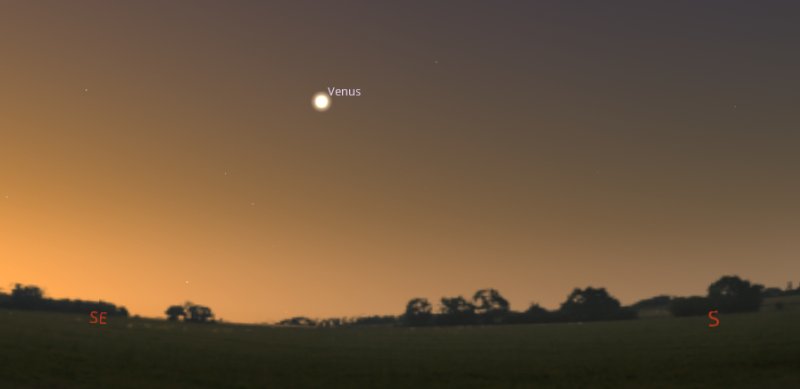 |
| |
|
It will be daylight shortly afterwards, so
please don't risk aiming a telescope or binoculars at the planet as you must
never risk accidentally catching even a glimpse of the rising Sun through an
eyepiece. |
| |
|
If you are desperate to use that telescope
you received for Christmas, wait until the evening of 27th and aim it
towards the east from around 7pm where there will be a bright Full Moon to
observe, with the constellation of Orion that contains the red giant star
Betelgeuse to the right of it. |
| |
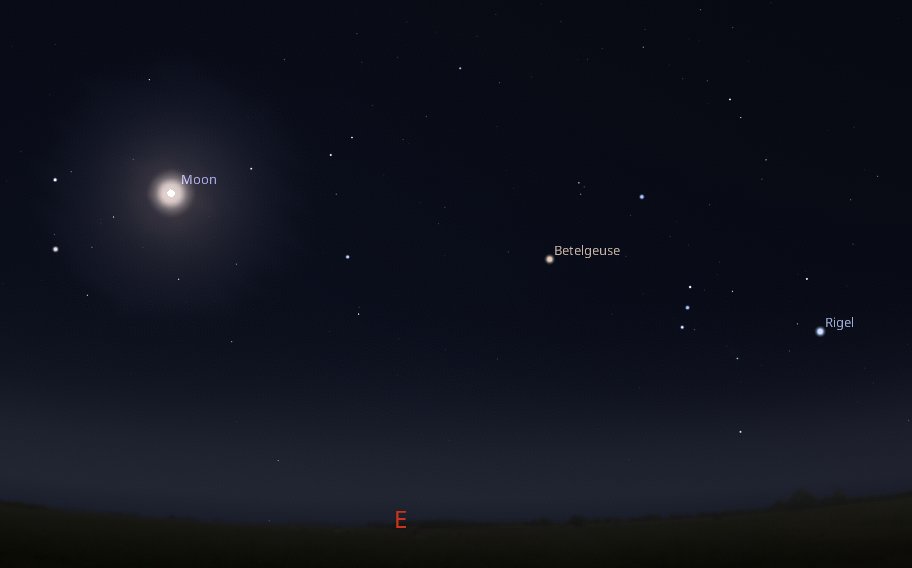 |
|
Monday 18th
to Sunday 24th December 2023 |
| |
|
If you stay up late on the evening of Tuesday
19th, Ganymede which is Jupiter's largest moon, will be occulted or hidden
by the planet. Look towards the south west at 11.30pm and Ganymede will be
just starting to disappear. It reappears again at around 1.15am on the
Wednesday morning. |
| |
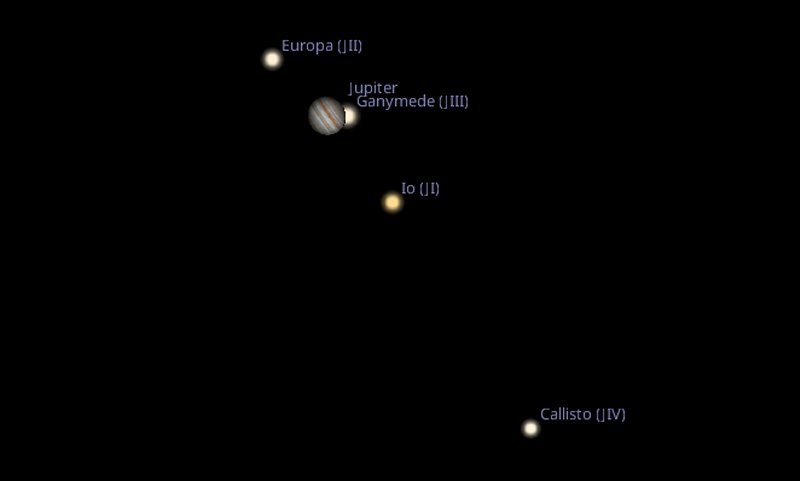 |
| |
|
Friday 22nd is the winter solstice here in
the Northern Hemisphere. This is when the Earth's north pole is at its
maximum tilt away from the Sun, resulting in the shortest period of daylight
hours and the Sun will be at its lowest maximum elevation above the horizon
at midday. |
| |
|
If you venture outside just after midnight on
the morning of Sunday 24th and look south west, there are several objects to
see with the naked eye. There will be a 91%-lit Waxing Gibbous Moon with
the Pleiades open cluster of stars above it and Jupiter below, forming a
straight line. To the left of the line will be the bright red giant star
Aldebaran. Further left again you will find the constellation of Orion with
the red giant Betelgeuse. Keep going left and almost due south will be the
brightest star in the night sky, Sirius. |
| |
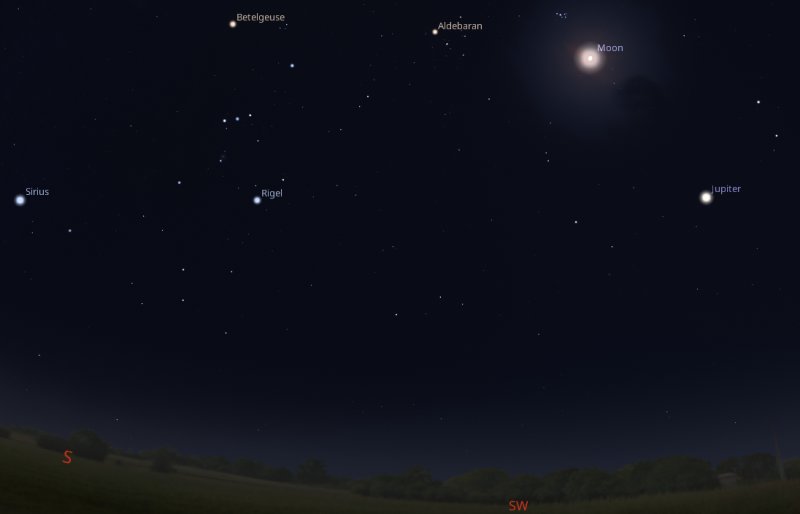 |
| |
|
The original Christmas "Star of Bethlehem"
has been the subject of much debate over the centuries - some people believe
it was a massive supernova where a star explodes, others think it was a
comet and there are several theories about it actually being a close
conjunction between Jupiter and Saturn that created the visual "star"
effect! |
| |
|
On that note, I would like to wish everyone a
peaceful Christmas and the clearest of skies for the coming year. |
| |
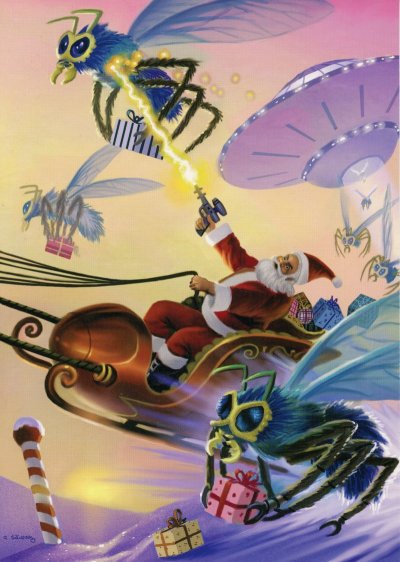 |
|
Monday 11th
to Sunday 17th December 2023 |
| |
|
I'll start next week's report with the
evening of Tuesday 12th, when it is the turn of Ganymede to be occulted by
Jupiter. If you look towards the south east at 8pm, the Galilean moon will
be just about to disappear behind the planet. |
| |
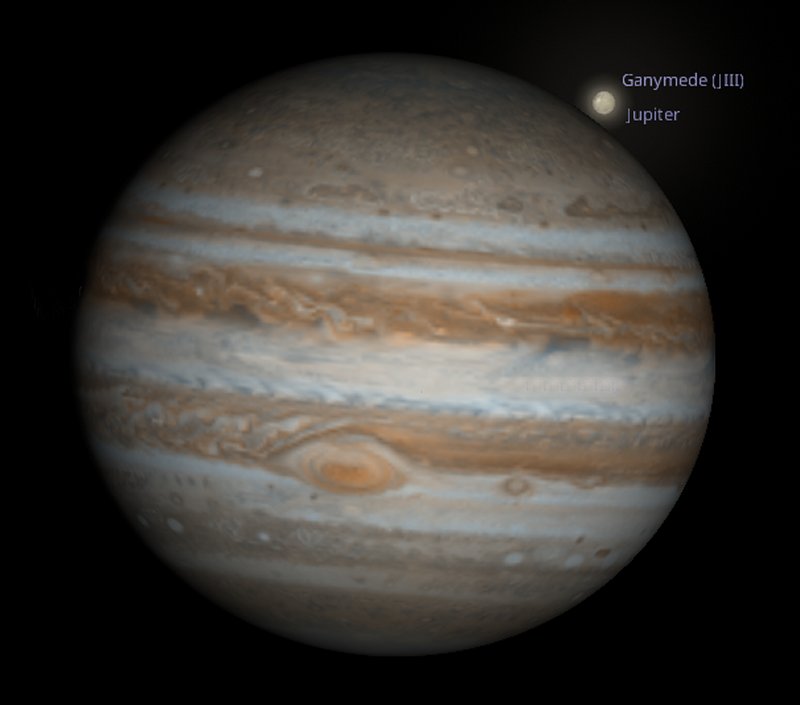 |
| |
|
Moving on to the night of Thursday 14th into
the early hours of Friday morning 15th, we have the peak of the annual
Geminids meteor shower. Around midnight, the constellation of Gemini will
be located towards the south east with the familiar shape of the "Twins"
looking as if one is above the other. The radiant point of the shower,
where the meteors seem to originate from, will be a little above the bright
star Castor which marks the head of the top twin. |
| |
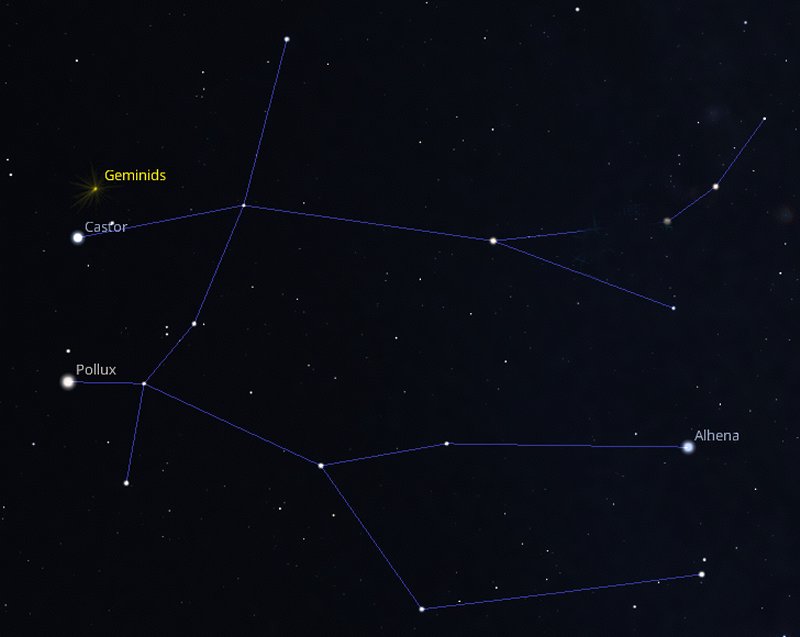 |
| |
|
Staying with the astronomical theme of
observing objects appearing to be on top of one another, at 7.30pm on Sunday
17th, a 27%-lit Waxing Crescent Moon will be sitting just below a magnitude
+0.8 Saturn if you look towards the south west. |
| |
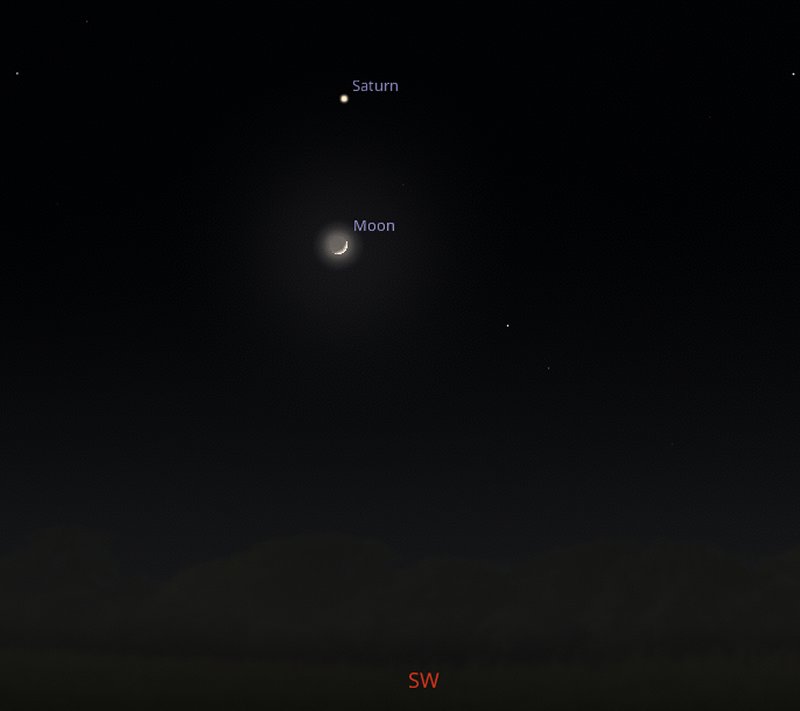 |
| |
|
An hour and a half later, at 9pm, the
Galilean moon Callisto will be directly below Jupiter's south pole if you
turn your telescope towards the south. You should be able to see all four
of the Galilean moons simultaneously, forming a line stretching away from
the planet. |
| |
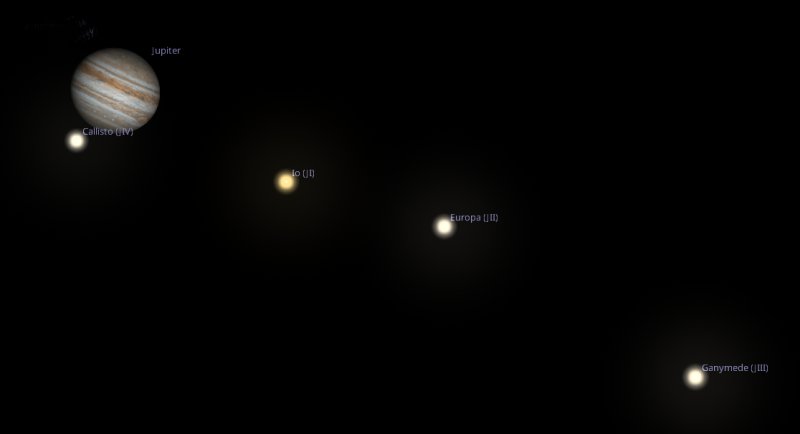 |
| |
|
If you try doing that, be careful as you will
be making the same observation that Galileo did back in 1610, when he
realised that our Solar System was "Heliocentric" with the Sun in the middle
- an observation that found him to be "vehemently suspect of heresy" and
placed under house arrest for the rest of his life! |
|
Monday 4th
to Sunday 10th December 2023 |
| |
|
I've spoken several times recently about
"transits" where one of Jupiter's moons passes in front of the planet,
casting a shadow. On the evening of Thursday 7th there is an opportunity to
see the opposite effect - an "occultation" where a moon passes behind the
planet and is obscured from our view. |
| |
|
Approaching 9pm, Jupiter will be located
towards the south, with the constellation of Orion to the left of it and
Saturn low on the horizon to the right. |
| |
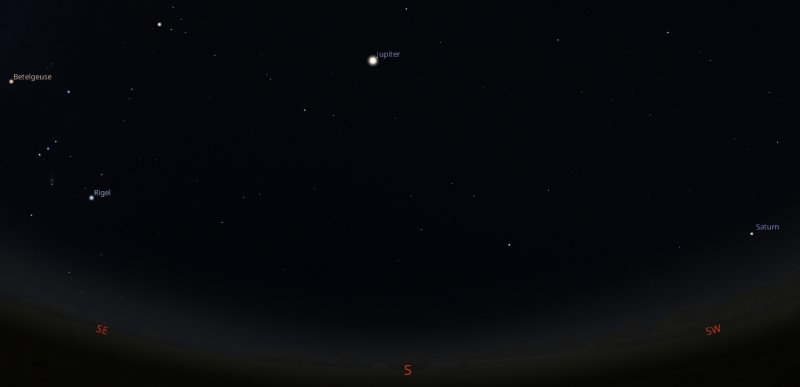 |
| |
|
At 9pm, the Galilean moon Io will be just
starting to disappear behind the gas giant. |
| |
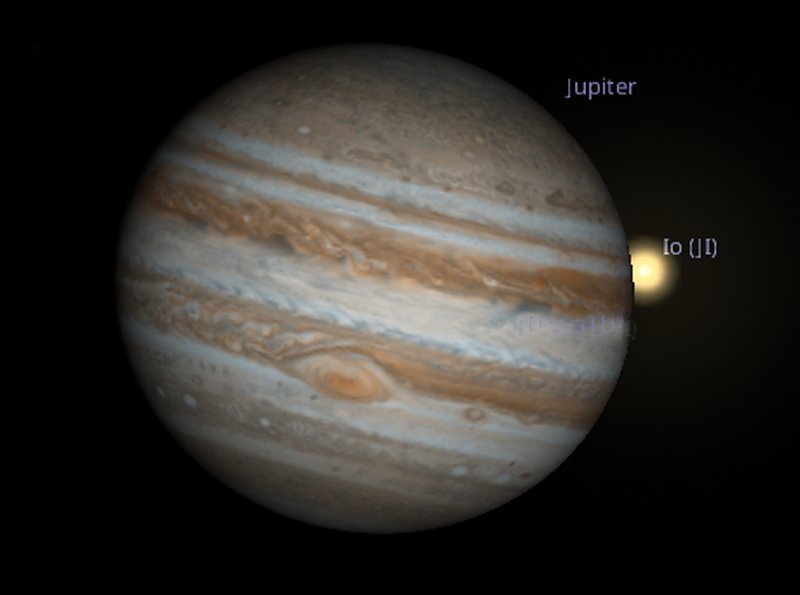 |
| |
|
It will reappear again from behind the other
side of Jupiter just after midnight. |
| |
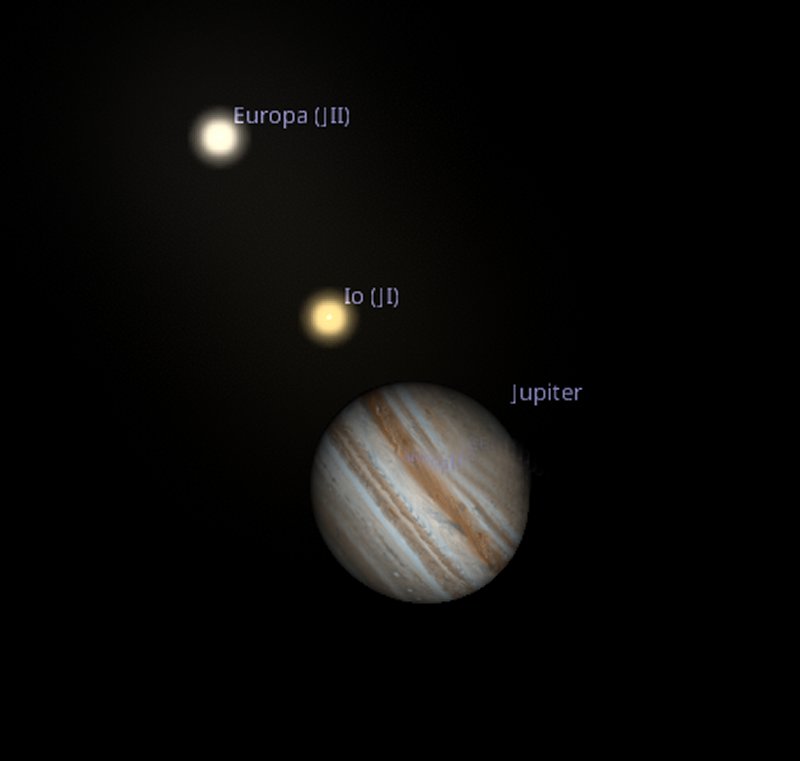 |
| |
|
If you would prefer an early morning, a
little before daybreak, say around 6am on Saturday 9th, a 14%-lit Waning
Crescent Moon will be visible towards the south east, with Venus just to the
left of it, shining very brightly at a magnitude of -4.0 so an excellent
chance to observe it. |
| |
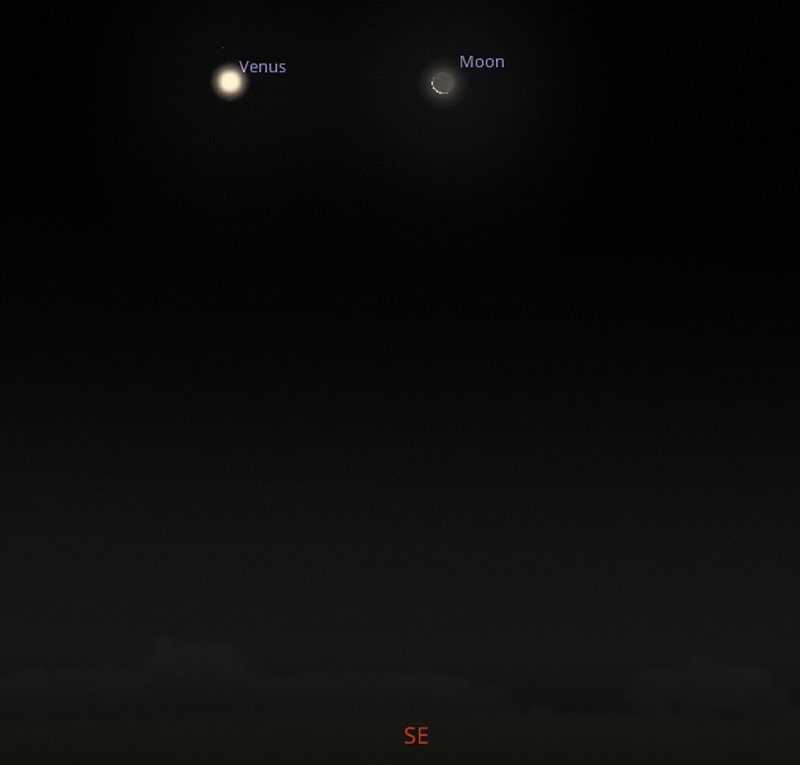 |
| |
|
Remember that the magnitude scale works
back-to-front, so the more negative the figure, the brighter an object
appears. With the naked eye from a dark location, you can see down to a
magnitude of +6.0 and anything fainter than that needs binoculars or a
telescope. The brightest star in the night sky, Sirius, has a magnitude of
around -1.4 so it is very easy to see. To put that into perspective, our
Sun (which doesn't really count because you don't see it in the NIGHT sky)
would have a magnitude of -26. That's why you NEVER try looking at it
through a telescope! |
| |
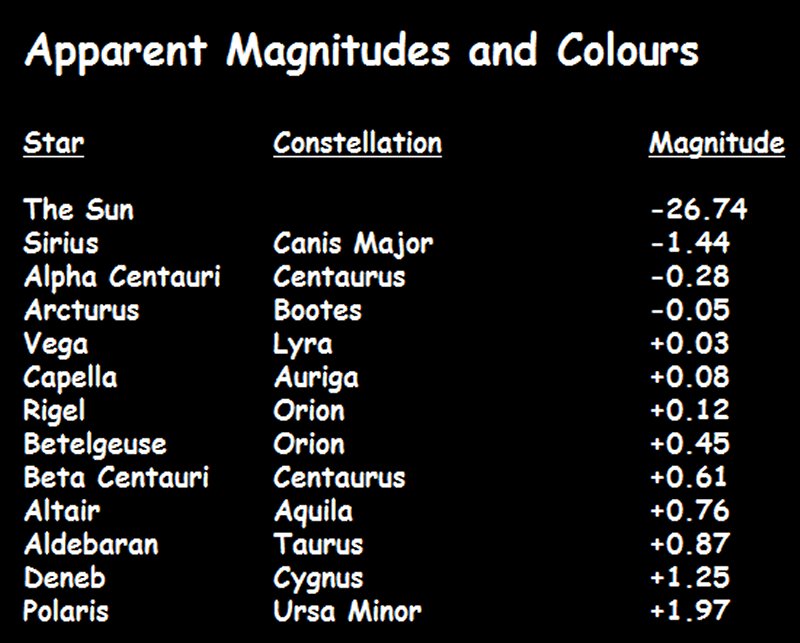 |
|
Monday 27th
November to Sunday 3rd December 2023 |
| |
|
It's a fairly quiet time for astronomical
events during the coming week, so I'm going to take the opportunity to talk
about something that has been in the news a lot lately - the Northern Lights
or Aurora Borealis. |
| |
|
We all know that the Sun gives off loads of
light, but it radiates other energy as well, including the Solar Wind that
is a plasma stream of electrons and protons originating from the upper
atmosphere of the Sun, an area known as the Corona. This stream can be
travelling at up to 750Km per second. |
| |
|
The Earth has a magnetic field around it
known as the Magnetosphere. When the Solar Wind hits our Magnetosphere, the
wind creates disturbances in it and the resulting ionisation creates the
amazing light that you see. |
| |
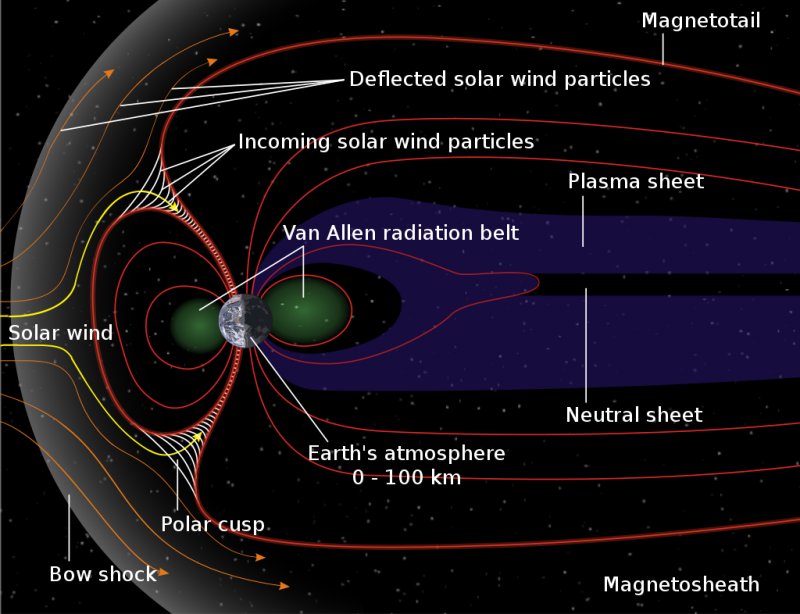 |
| |
|
Magnetosphere diagram courtesy of
Wikipedia |
| |
|
The disturbance is concentrated around the
poles, so the visual effect is normally seen in the polar regions, but when
the aurora is super strong, it can reach further down and we have a chance
to observe it here in the south west of England. Auroras around the North
Pole are known as the Aurora Borealis, but there is also an Aurora Australis
around the South Pole. |
| |
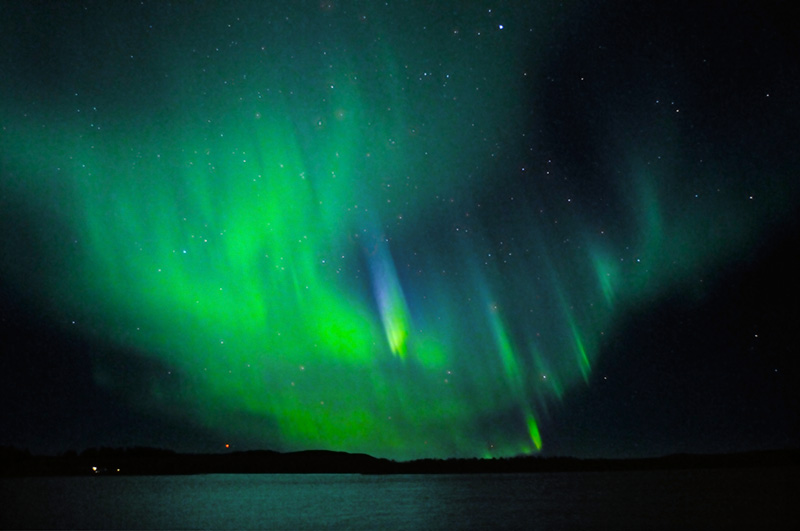 |
| |
|
Aurora image courtesy of Wikipedia |
| |
|
On a totally different subject, my astronomy
talk and star party at the Ham Hill Visitor Centre in December sold out very
quickly, so I have agreed two more dates for the New Year. The dates for
your diary are Friday 26th January and Friday 8th March. Booking is via the
Visit South Somerset website, accessible by clicking on the images below: |
| |
|
Monday 20th to
Sunday 26th November 2023 |
| |
|
How about seeing two things at once? Well
there are a couple of opportunities to do that next week without having to
stay up late. |
| |
|
Firstly, during the evening of Monday 20th, a
First Quarter Moon will make a great target for your binoculars or telescope
with Saturn just above and to the right of it. If you venture outside
around 6pm, the pair will be located towards the south. |
| |
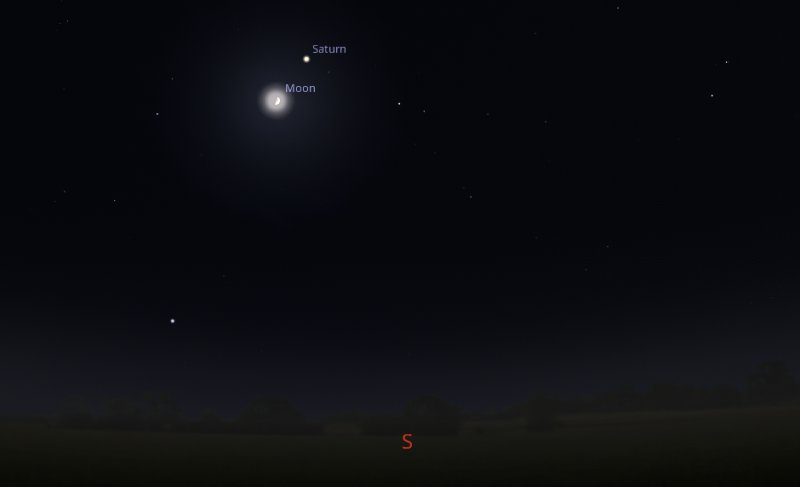 |
| |
|
By 11pm they will appear to have moved across
the sky and will be disappearing below the horizon towards the south west. |
| |
|
Go outside at 6pm on Saturday 25th instead
and an almost Full Moon will be located towards the east, with Jupiter just
to the right of it. |
| |
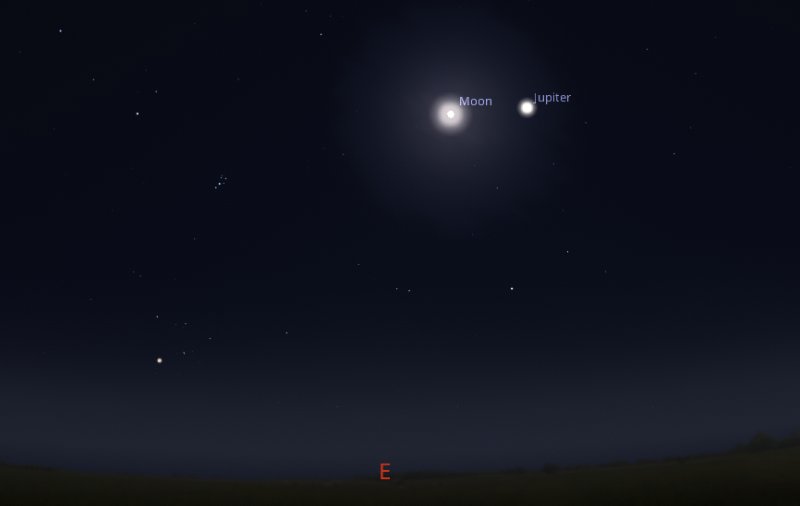 |
| |
|
The actual Full Moon occurs a couple of days
later and this period is not the best for observing faint deep sky objects
because a Full Moon is the ultimate source of light pollution! The whole of
November is brilliant for studying Jupiter though as it reaches a nice high
elevation in the sky and is visible for most of the night, so if you can't
sleep and feel the urge to whip out your telescope at 2am, the gas giant
will still be there waiting for you! |
| |
|
Finally, there is one good opportunity to
observe the International Space Station passing silently overhead on the
early evening of Wednesday 22nd. It will appear above the horizon to the
west at 5.57pm and will be visible for five minutes before disappearing
towards the east. Sunlight reflecting off the ISS solar panels make it look
like a bright star, except that it doesn't twinkle and it's moving! |
|
Monday 13th to
Sunday 19th November 2023 |
| |
|
On Monday 13th, planet Uranus reaches
opposition when it will be shining at its brightest. With a magnitude of
around +5.6 it could just be seen with the naked eye from a very dark
location that has zero light pollution. |
| |
|
If you look towards the east around 6pm,
Jupiter will be easy to spot due east, with the Pleiades open cluster of
stars to the left of it. Uranus will be located half way between the two. |
| |
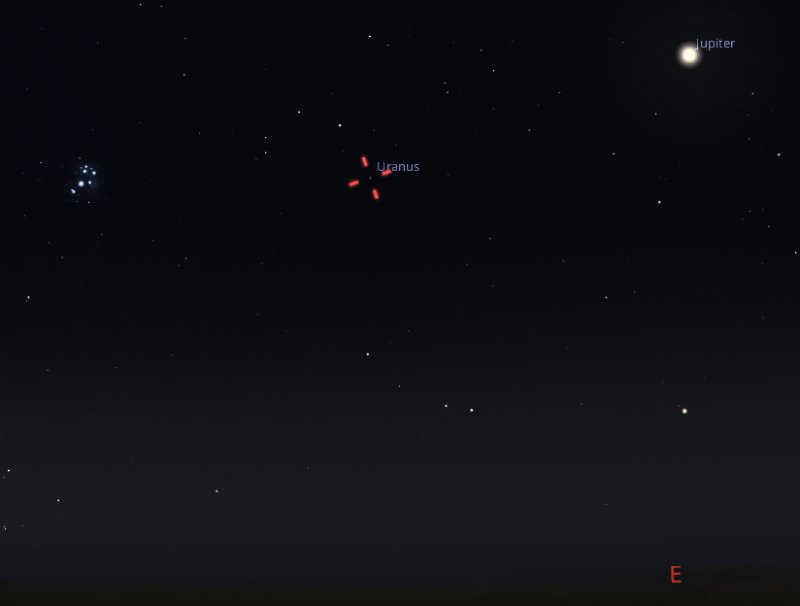 |
| |
|
It may be difficult to identify the planet
amongst the background stars, so I have provided a star chart to help you
select the correct pinpoint of light! |
| |
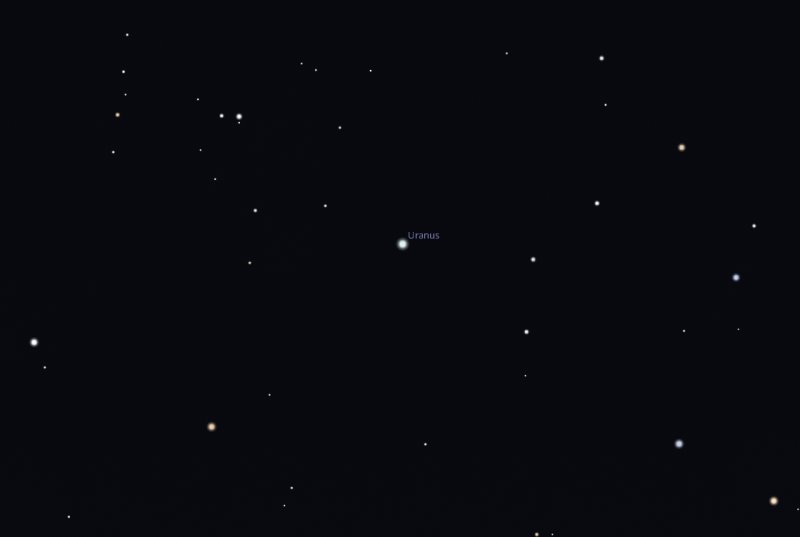 |
| |
|
The early morning of Saturday 18th sees the
peak of the Leonids meteor shower, so named because the radiant point where
the meteors appear to originate from is near the head of the lion in the
constellation of Leo. |
| |
|
From 1am on the Saturday morning, Leo will
have risen above the horizon towards the east. |
| |
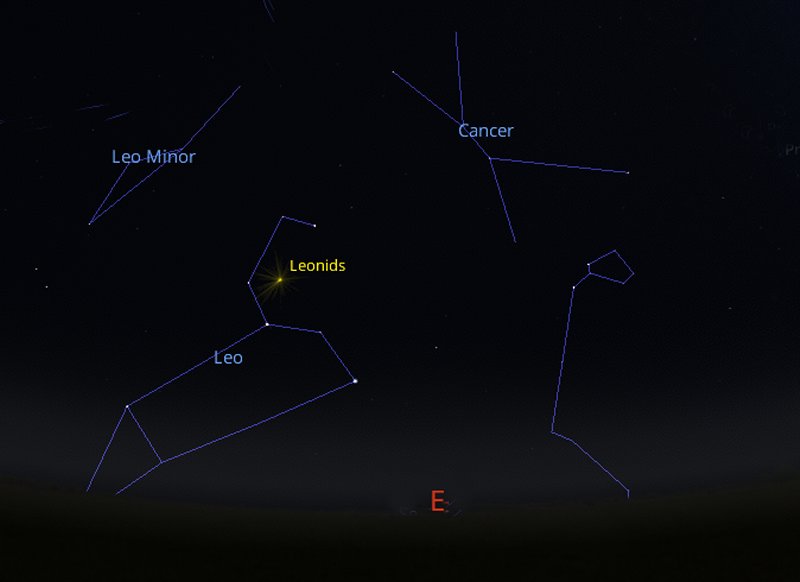 |
| |
|
By 4am, Leo will have moved towards the south
east and a very bright planet Venus will be rising towards the east with the
constellation of Virgo as its backdrop. |
| |
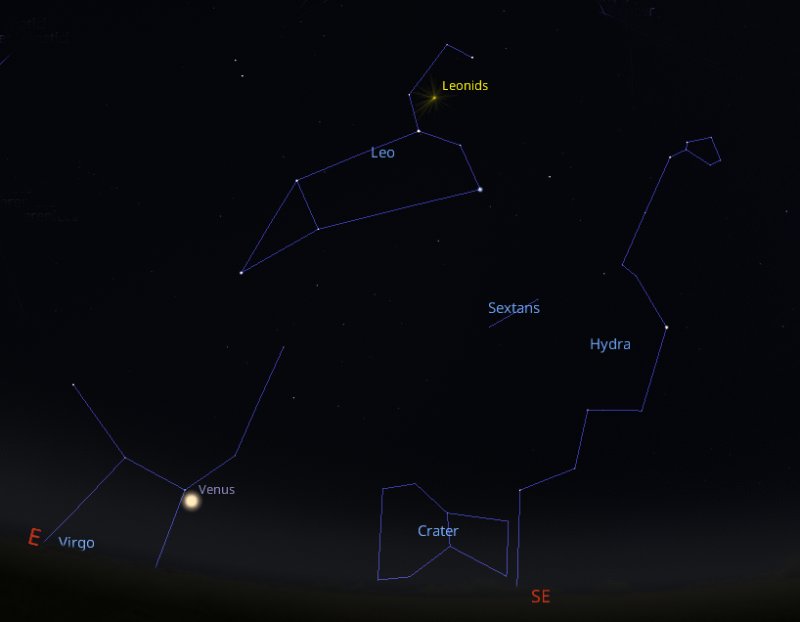 |
| |
|
At its peak, the Leonids meteor shower can
produce up to 12 shooting stars per hour which are debris left by comet
Tempel-Tuttle entering the Earth's atmosphere at speeds of up to 70 km/s.
|
|
Monday 6th to
Sunday 12th November 2023 |
| |
|
It looks like next week is going to be
"Jupiter Week" as there are several things to spot with your telescope on
what is the largest planet in our Solar System.....that's if the weather
plays ball! |
| |
|
Firstly, from 10.20pm on the evening of
Monday 6th, the Galilean moon Io transits the gas giant planet. Underneath
Io itself, you may be able to see the shadow that it casts on Jupiter's
surface. Around that time, Jupiter will be nicely placed towards the south
east and very easy to spot because it is so bright. |
| |
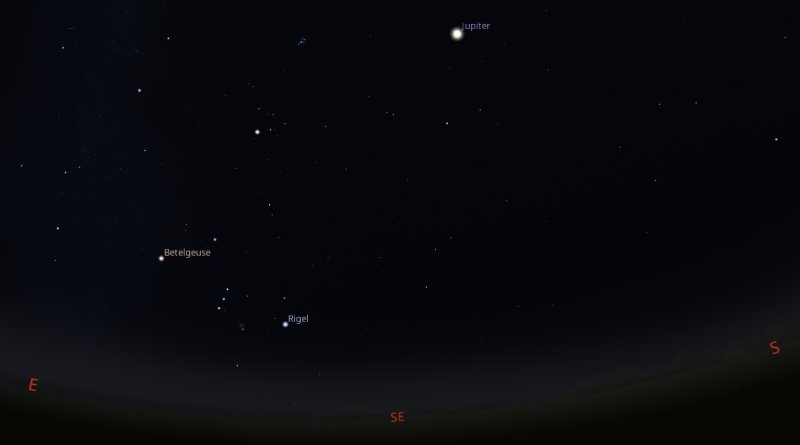 |
| |
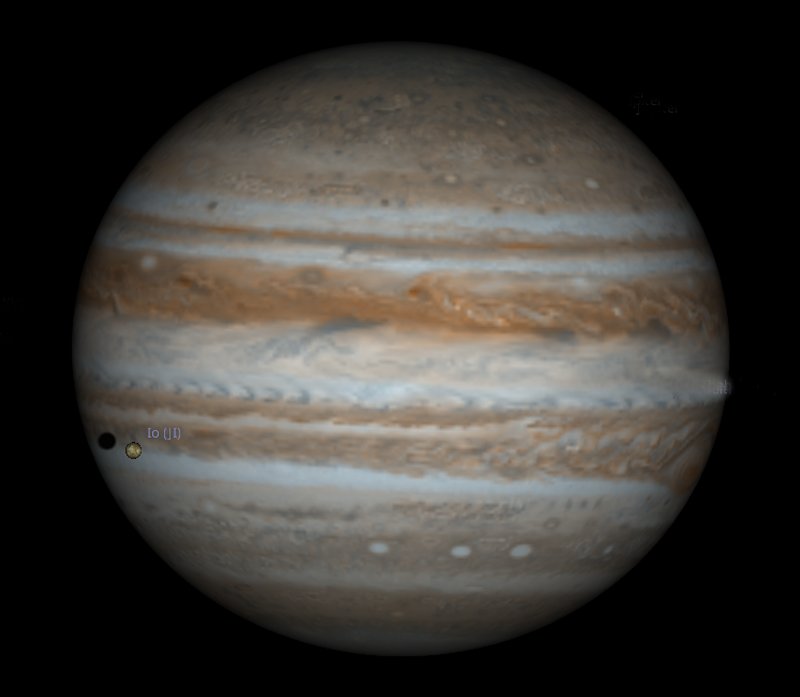 |
| |
|
Then from around 6pm on Friday 10th it is
Ganymede's turn to transit the planet. Because it is earlier in the
evening, Jupiter will be located more to the east. |
| |
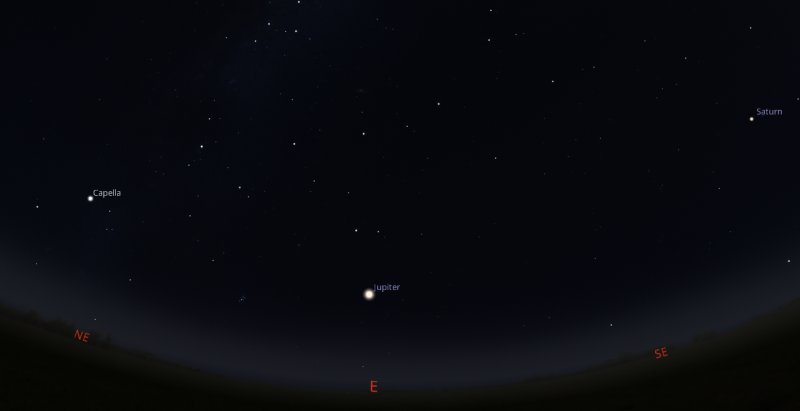 |
| |
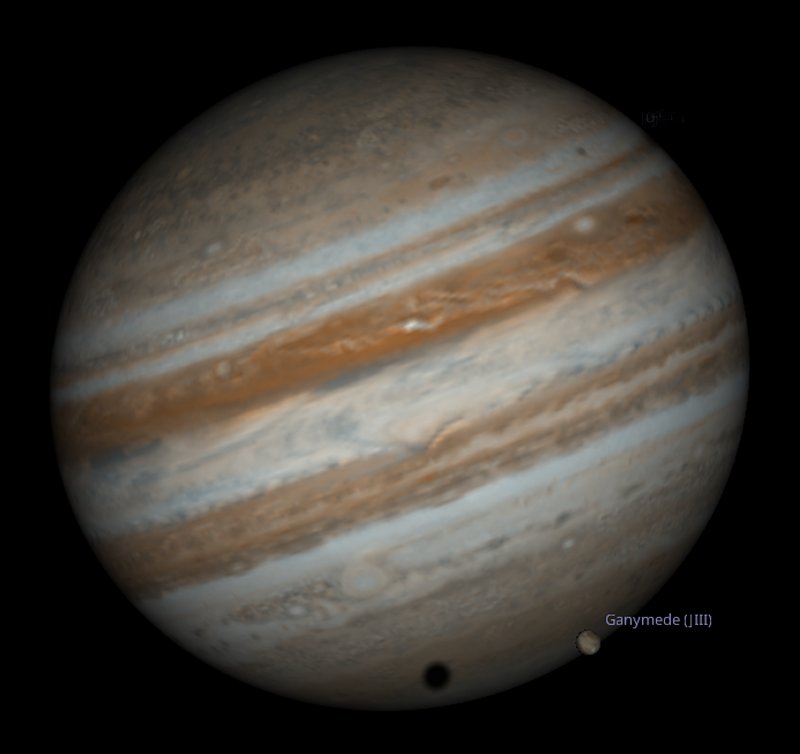 |
| |
|
The transit will be finished by 7.45pm so
then you could turn your telescope southwards to take a look at Saturn's
rings. |
| |
|
Finally, Saturday 11th around 8.45pm is an
optimum time to observe the Great Red Spot on Jupiter's surface. Again,
Jupiter will be easy to spot towards the south east, a little to the right
of the Pleiades open cluster of stars. |
| |
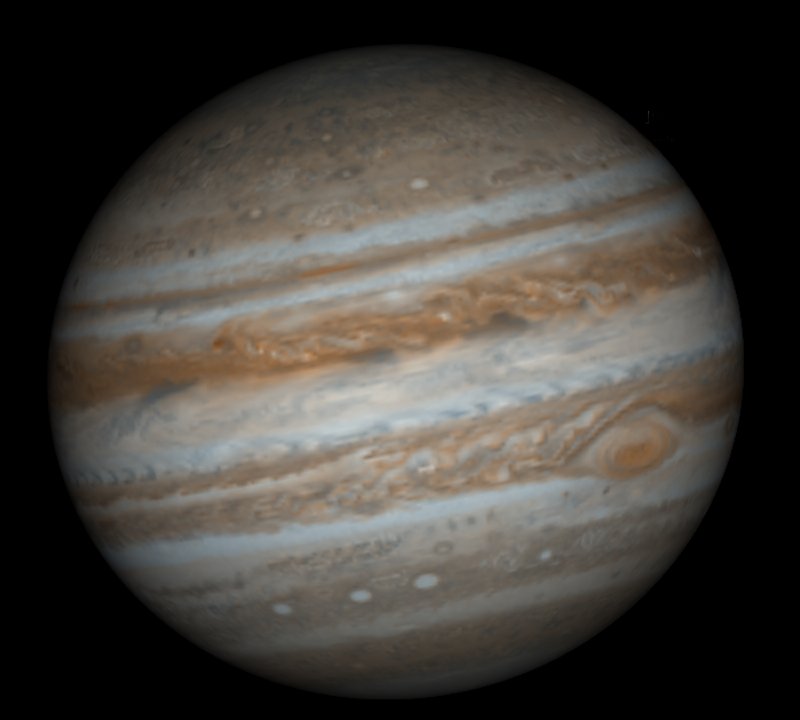 |
| |
|
The Great Red Spot is actually a storm in
Jupiter's atmosphere that has been blowing for over 350 years with wind
speeds up to 270 miles per hour. It is about the same size as the whole of
our Earth and appears to rotate around Jupiter every ten hours. And you
thought we had it bad! |
| |
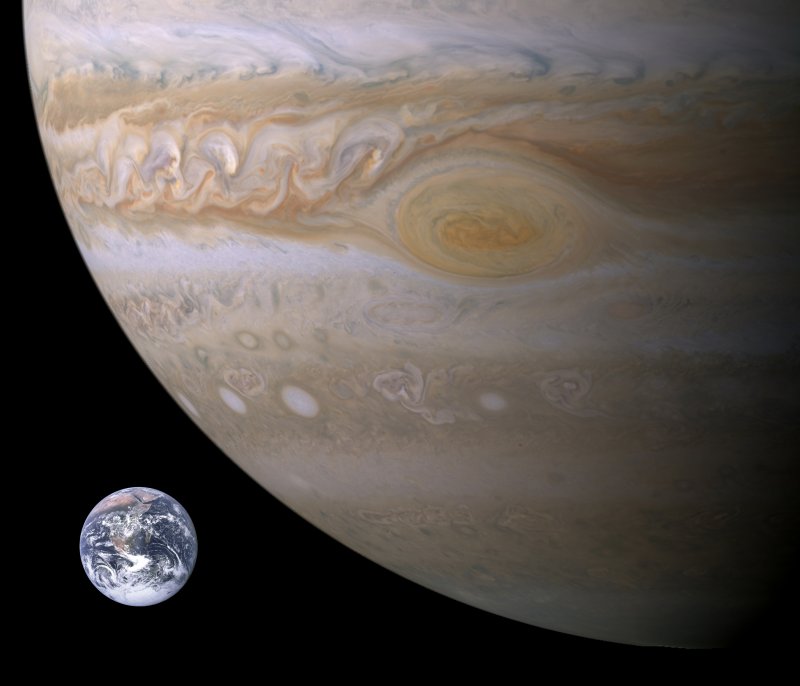 |
| |
|
Great Red Spot - Earth Comparison
image courtesy of Wikipedia |
|
Monday 30th
October to
Sunday 5th November 2023 |
| |
|
On Friday 3rd Jupiter reaches opposition,
when it will be at its brightest and shining at an impressive magnitude of
around -2.8 |
| |
|
By 6pm the planet will have risen above the
horizon to the east and if you look to the left of Jupiter you will find the
Pleiades open cluster of stars. |
| |
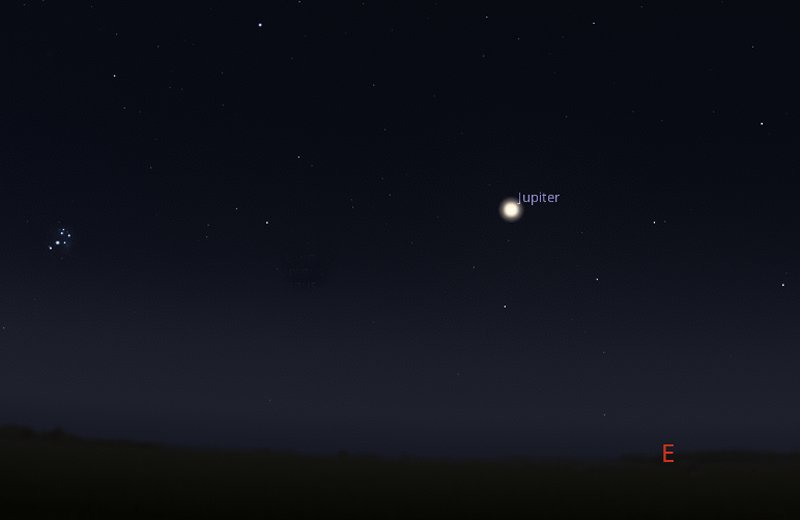 |
| |
|
Aiming a telescope at Jupiter will reveal all
four of its Galilean moons. Sometimes you won't see all four of them, if
one is hidden from view as it passes behind the planet. |
| |
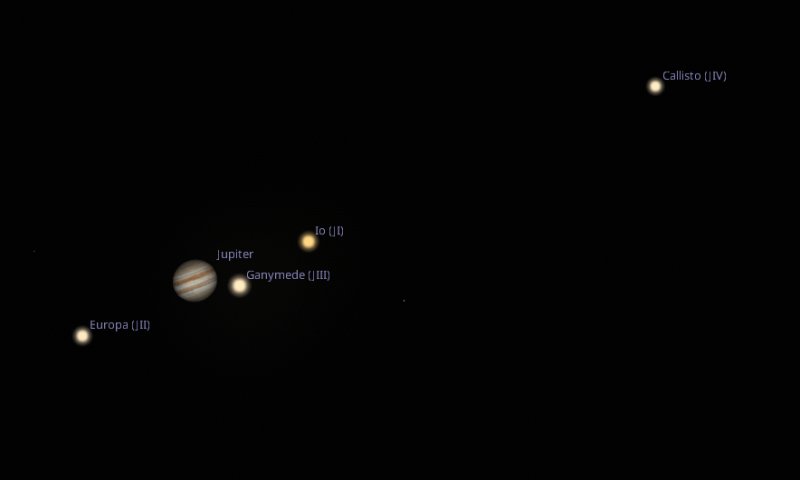 |
| |
|
Turn your telescope towards the south east
and you will find Saturn with its dust rings. |
| |
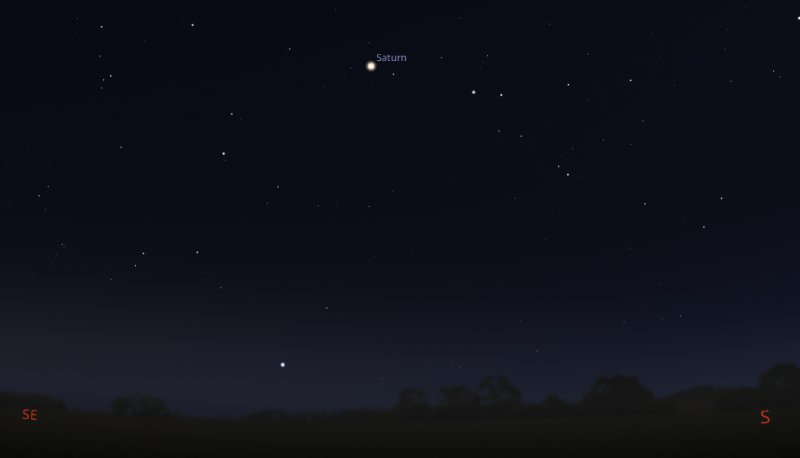 |
| |
|
You could even try to identify some of
Saturn's numerous moons. |
| |
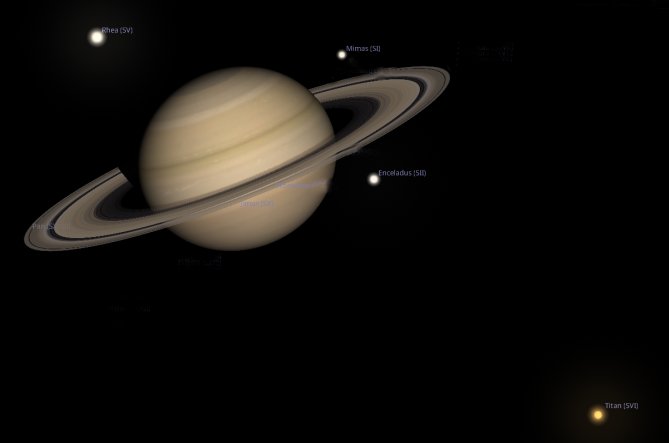 |
| |
|
If instead you venture outside around 11pm on
Saturday 4th, a 53%-lit waning Gibbous Moon will have risen above the
horizon to the east. |
| |
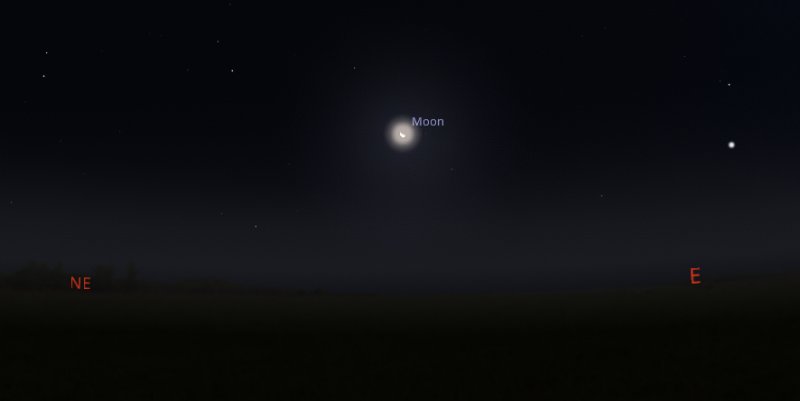 |
| |
|
Just to the right of the Moon will be the
Beehive open cluster of stars, also known as M44 in the Charles Messier
catalogue. M44 is one of the closest clusters to us and it comprises around
1000 stars. To the naked eye it will resemble a fuzzy blob, but it may be
difficult to see at all without a telescope because of light pollution from
the nearby Moon. |
| |
 |
















